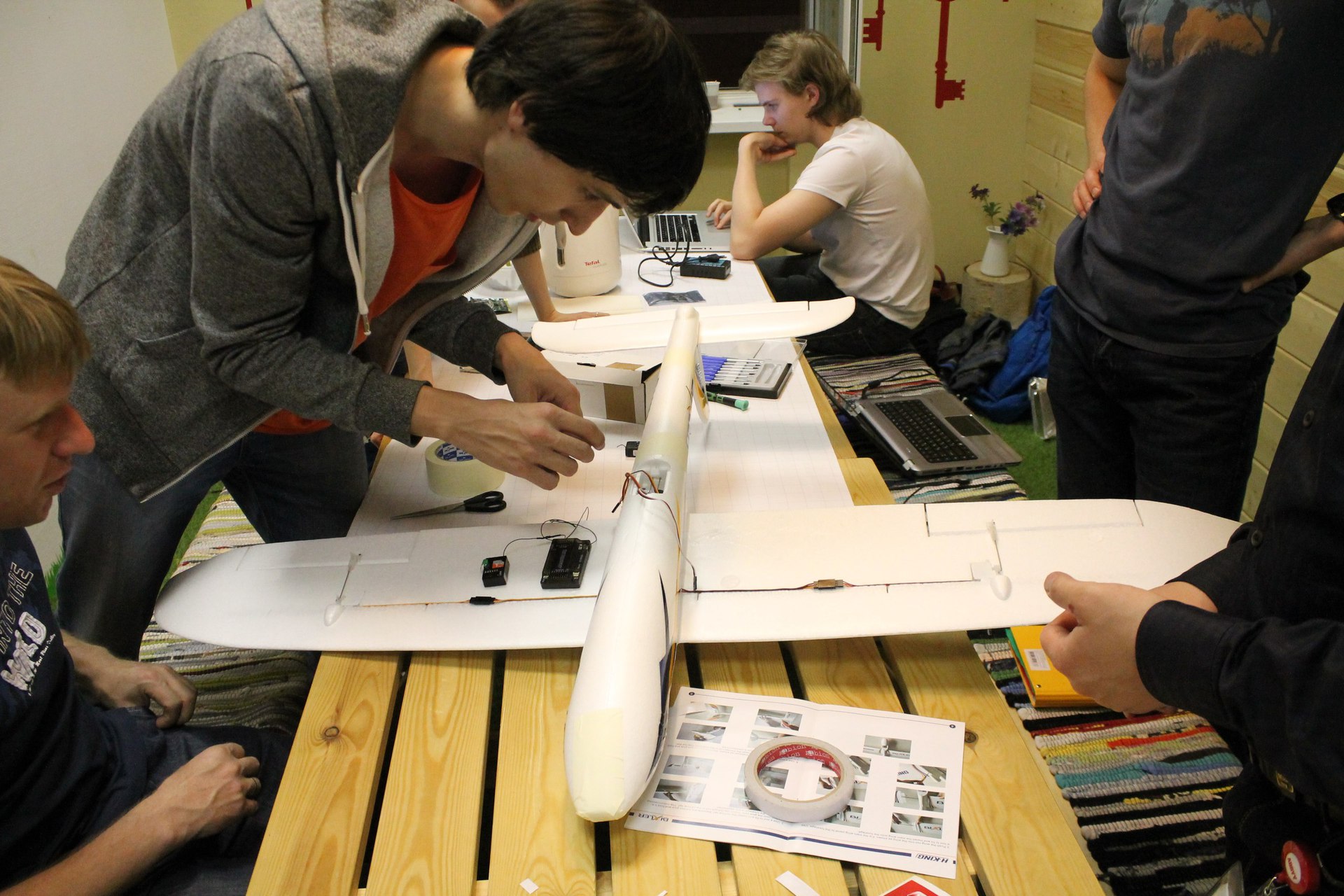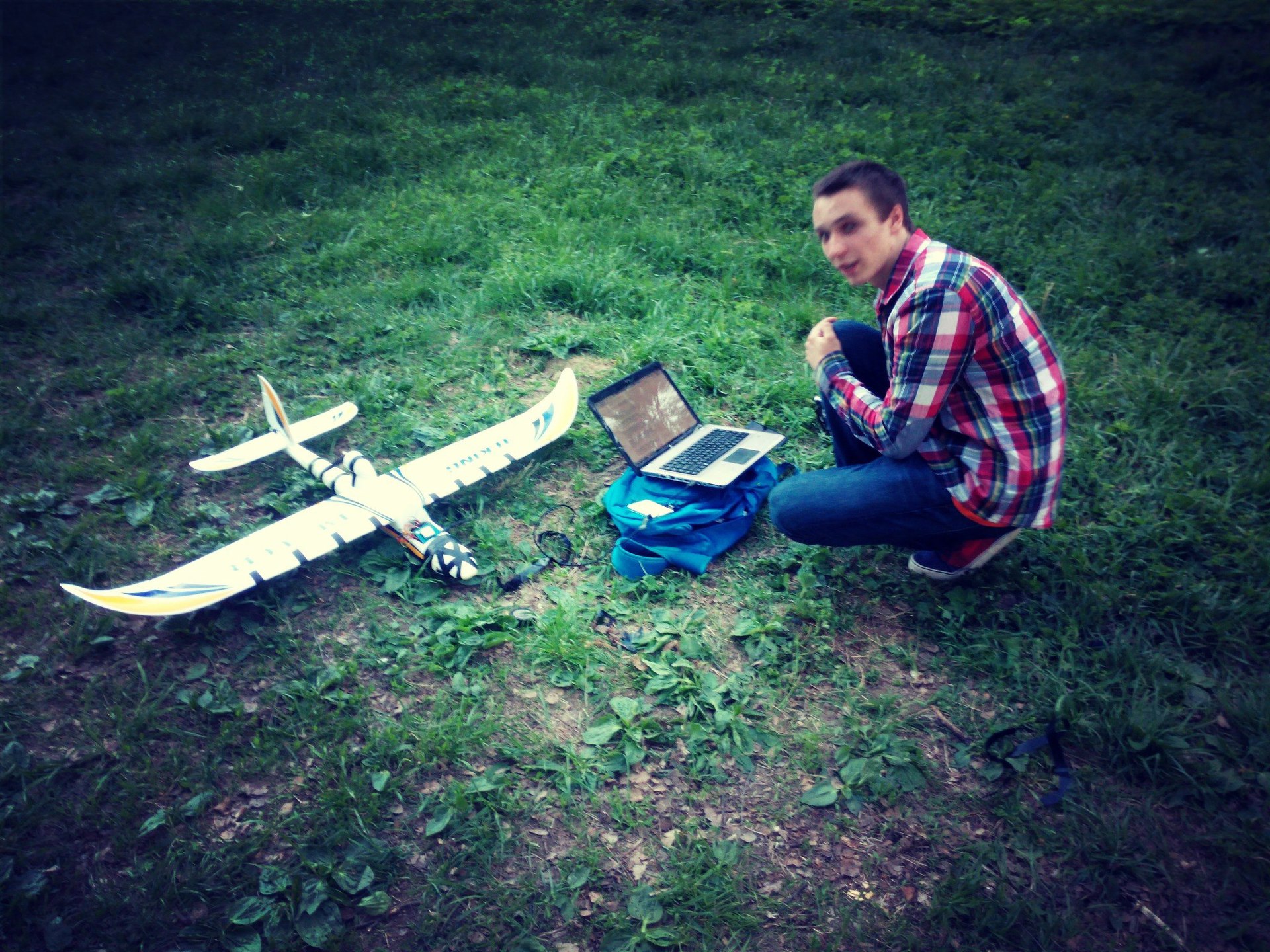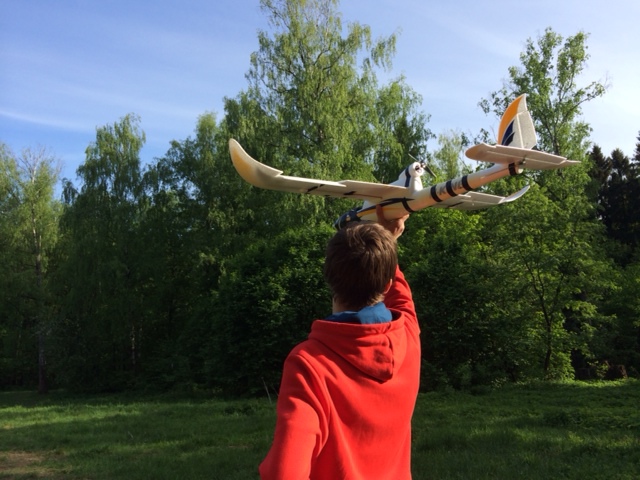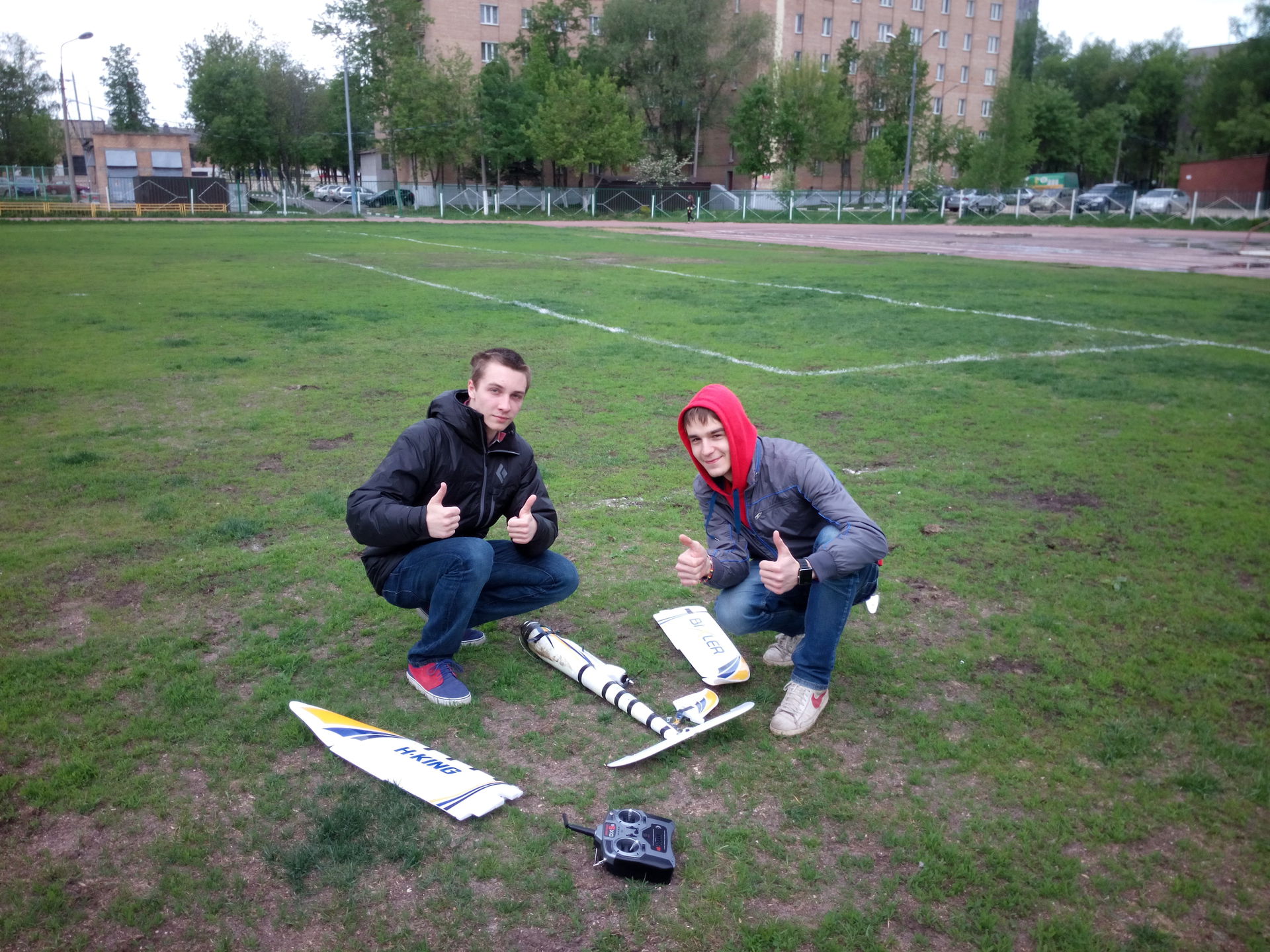How we collected a flying robot
What we wanted
We have at the faculty of innovation and high technology MIPT this type of cool course - an innovative workshop. In short - teams of third-year students are recruited who are trying to do something real, preferably connected somehow with programming and modern technologies proper. This is what we wanted to achieve. Our project is to make an airplane (yes, nowadays fashionable quadrocopters!), Which will be able to take off / land in automatic mode, fly along GPS points, and shoot everything that it sees on the built-in camera. FPV we also wanted, but later.
Remark
The post is more likely not scientific and technical, but from the category of cool story, in which there were many failures, but there was also some kind of success. So everyone who wants to laugh and find out what we have done, I ask for Habr-Kat.

Who are we
Our team consisted of five third-year students, and was more like a zoo:
two pluses, a real ios developer, a mathematician, and a girl who was obliged to keep us together and force us to do something.
Plus, three guys from ABBYY worked with us, because our project was from this company.
How we first wanted to do all this
The plan was simple - we bought the simplest RTF (ready to fly) aircraft at hobbyking, pulled out a radio from it, inserted an arduino there, or maybe a board on the workstation from a broken smartphone, put the firmware there (in the case of workstation - ROS - robot operating system, Arduinka - something from ardupilot, megapirat, multi-wii or some fork of all this). After that, we get what we wanted, calmly close the course, and then we continue to improve the whole thing - we fasten the camera gimbal, manage this gimbal, try to come up with some more chips and add them. What came of it? Eh ... Well, at least something.
Purchase of components
Initially, we ordered two copies of the quite popular second Bixler - hobbyking.com/hobbyking/store/__32541__Hobbyking_Bixler_2_EPO_1500_KIT_.html , these
brains were selected - www.hobbyking.com/hobbyking/store/__26588__ we received an order from
all of us to order us all the time. .
Then I’ll immediately leave a review about HC - the Chinese not only made a purchase for three days, they also did not give a tracking number, and it did not work out from them. As a result, we ordered the parcel in mid-March, received it on Victory Day, May 9 ... The semester was already over.
At the end of April, we realized that it was impossible to pull on and wait for the mythical premise, and we had to do something.
In Russia, the aircraft was purchased, the strongest (for the first flights), which could drag our board and, in the future, the camera.
Here is a photo of the plane:

BY
After long disputes and attempts to collect something sensible, we settled on the Ardupilot, which in addition to being able to do a lot of cool things out of the box, there is also a very cool thing - APM Mission Planner, which allows you to lay missions directly from a convenient board guaya (which we thought users would like) + there is also the ability to set missions using your tablet / phone, you only need USB OTG support to set up a mission, and telemetry kit on the plane to track its status and change goals on the go.
First build
Having assembled this very red plane, we tuned PIDs for a very long time and stubbornly, because it is not very popular, it was more like handicraft production, and we did not find normal ready-made configs for it. In total, 321 parameters are required in the firmware, which determine how the firmware will control the hardware. Nothing good came of it; we were unable to take off in automatic mode.
New plane
Then came May 9, and we were lucky - our planes arrived. The truth came in completely disassembled condition, so we spent the evening on their complete assembly.



First flight
Having collected the plane, we went to fly. At first, of course, nothing happened - the plane did not want to automatically go on a mission, did not turn on the engine after starting from hand. After that, we rummaged through configs and settings - it turned out that when the power was turned on, the board defaulted to the wrong mode of operation - it was waiting for a connection to the PC, and not trying to start the mission.
After that was the funniest and saddest moment of our flights. Late in the evening, after the next launch, the plane flew. A crosswind blew, he tried to stabilize, and ... turned over ... We reversed the polarity of the servos responsible for the ailerons ... However, the flight did not end there - after about 20 meters, the plane reached its landing belly up, and yes, it started to land. Considering that we did not confuse the polarity of the elevator, the plane went vertically upwards and caught hold of tree branches.
Photo report of that day -



As you can see, we strengthened the nose and wings of the aircraft with electrical tape and mounting tape - and for good reason. After all the accidents and crashes, the plane held steady and flew, and it took about 5-10 minutes to prepare it for the next launch.
However, the first day of flights ended in nothing - it got dark, but we never learned to fly.
The second flight day brought us nothing useful - trying to fly for about 2 hours, our plane hung on a high birch, and the brave local archers - Tolkienists - took it off from there. Repair took all night.

Success
Before the presentation of our project, there was only 2.5 hours left, the clock was 6 in the morning, and we went to try to fly.
The first flight almost became the last:

We already thought that this photo would be the only slide in the presentation of our project.
It turned out that JPI departed during the start-up - a jumper on the board that determines where the board gets the power from - from the aircraft's ESC or from USB.
Failure Video:
However, we fixed it, and partial, but success, awaited us.
As you can see, after starting from hand, the automatic mode was turned on, the plane took off (because control passed to the board), dived down, then lay on course, reached the landing zone and sat more or less softly. Unfortunately, the operator was not lucky, and we shot it crookedly. However, you can clearly see how the plane is heading and stabilizing.
After that, we were no longer able to fly again - the JPI jumper kept on the nozzles and constantly flew out, and time was running out.
In the near future, plans to attach a camera and fly over large areas, but this is a topic for a future post.
If someone is interested in something, he is ready to answer in the PM / comments / another post.
ps And here is how we ended up on a tree:
